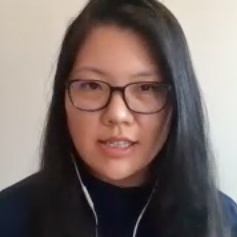
California is trying to figure out how to incorporate renewable natural gas into its clean energy mix while diverting millions of tons of methane-emitting organic waste from its landfills.
Renewable natural gas (RNG) — produced from landfills, dairies and dead trees — is disfavored by many environmentalists because of its un-green sources. But RNG is likely to play a larger role in California as the state tries to drastically reduce greenhouse gases and rely on 100% clean energy by 2045.
It can power vehicles, heat homes and run cooktops using existing gas pipelines and household appliances.

“We’re fine being the bridesmaid and not the bride, but at the end of the day we think we will be utilized in a low-carbon future,” Sam Wade, public policy director for the Coalition for Renewable Natural Gas, told a California Energy Commission workshop on RNG Tuesday. “When you design your policies to move things around and be flexible, we’re a very flexible resource that can be used anywhere conventional gas is used.”
Others made the case that renewable natural gas (RNG) is a way to deal with the huge amounts of methane from the state’s large commercial dairies and landfills, which together produce 75% of methane emissions statewide, according to the California Air Resources Board.
Dairies produce 54% of methane emissions; landfills account for 21%. Wastewater treatment, another source of renewable natural gas, represents about 3% of methane emissions in California.
Senate Bill 1440, adopted in 2018, requires the California Public Utilities Commission to “consider adopting specific biomethane procurement targets or goals for each gas corporation so that each … procures a proportionate share … of biomethane annually.” The state’s two largest gas corporations under CPUC jurisdiction are Southern California Gas and Pacific Gas and Electric.

CPUC Senior Energy Analyst Karin Sung said CPUC staff have proposed targets under SB 1440 that would require the gas companies to procure enough biomethane to divert an additional 8 million tons of organic waste by 2025. Most of the waste would be from compost and chipping and grinding of trees and other vegetation.
Under the plan, utilities would have to procure 75.5 million MMBtus of renewable natural gas by 2030 to support the state’s waste diversion goals, Sung said.
The state has well-established programs to help dairies stop methane leaks, and about 154 wastewater treatment plants around the state have biodigesters, so “the biggest slice of the pie here that’s remaining is landfills,” she said.
State law requires landfills to capture or destroy methane, including through burning the gas to break it down, but landfills continue to emit large quantities of methane.
Super Emitters
NASA’s Jet Propulsion Laboratory in Southern California has developed methods to pinpoint and measure methane and carbon dioxide “point sources” from airborne surveys. NASA researchers identified 30 large landfills as producing 40% of the total point-source emissions detected in their survey of more than 300,000 industrial facilities, dairies and landfills.
NASA said the “super emitter” landfills showed huge plumes of methane, a potent greenhouse gas that, like carbon dioxide, traps heat in the atmosphere, “but it does so more efficiently and for a shorter period of time” than CO2, the space agency said.
That’s why the CPUC is targeting landfills for new biodigesters or expanded digester capacity, Sung said.
There are now nine standalone anaerobic digestion plants in California to turn waste into usable gas, eight of which have expansion plans, she said. More than 150 wastewater treatment plants also have digesters that could handle more waste.
The state’s CalRecycles program requires processing 10 million tons of organic waste by 2025. Adding another 8 million tons under the CPUC proposal would mean diverting a total of 18 million tons of waste in the next four years, which is beyond current capacity.
“That’s where we step in,” Sung said.
The CPUC has proposed the state’s four largest investor-owned utilities establish a cost-effectiveness test to “guide procurement decisions through a jointly filed Standard Biomethane Procurement Methodology,” requiring CPUC approval.
Boosting capacity and building new plants will likely require passing costs on to gas ratepayers, so ensuring cost-effectiveness is essential, Sung said. Making sure the digesters can produce gas of pipeline quality is another concern. Reducing the impact of landfills on low-income communities is vital, too, she said.
The digesters could also help the state deal with the vast quantities of dead timber from wildfires and the vegetation from tree-clearing efforts along thousands of miles of power lines, Sung said.
“When you think of woody biomass, it’s more than just the wood itself,” she said. “It also the grasses and invasive species — anything that we can do to help support and prevent additional wildfires.”
The black carbon from those fires, which has far exceeded any other state pollutants in recent years, is another target of GHG reductions, she said.


